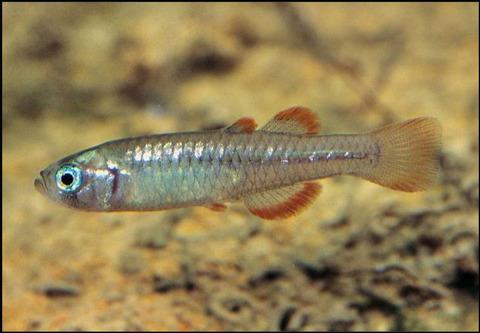当前位置:
X-MOL 学术
›
J. Appl. Ecol.
›
论文详情
Our official English website, www.x-mol.net, welcomes your
feedback! (Note: you will need to create a separate account there.)
Assessing the benefits and risks of translocations in depauperate species: A theoretical framework with an empirical validation
Journal of Applied Ecology ( IF 5.0 ) Pub Date : 2020-02-25 , DOI: 10.1111/1365-2664.13581 Elise M. Furlan 1 , Bernd Gruber 1 , Catherine R. M. Attard 2 , Robert N. E. Wager 3, 4 , Adam Kerezsy 3, 5 , Leanne K. Faulks 6 , Luciano B. Beheregaray 2 , Peter J. Unmack 1
中文翻译:

评估贫化物种易位的益处和风险:具有经验验证的理论框架
更新日期:2020-02-25
Journal of Applied Ecology ( IF 5.0 ) Pub Date : 2020-02-25 , DOI: 10.1111/1365-2664.13581 Elise M. Furlan 1 , Bernd Gruber 1 , Catherine R. M. Attard 2 , Robert N. E. Wager 3, 4 , Adam Kerezsy 3, 5 , Leanne K. Faulks 6 , Luciano B. Beheregaray 2 , Peter J. Unmack 1
Affiliation

|
- Conservation translocations are becoming more common to assist in the management of threatened native species. While many translocation programs focus on maximizing survival in newly established populations, consideration is also required for the persistence of source populations.
- Here, we present and test a theoretical framework that assesses the translocation trade‐off between increasing a species probability of survival and decreasing a species’ overall genetic diversity. We anticipate that (a) the genetic diversity of translocated populations will be reduced compared to the source due to a failure to capture and retain genetic diversity and (b) the genetic diversity of the source population will decline due to the removal of founder individuals.
- We test this framework with an empirical study of redfin blue eye Scaturiginichthys vermeilipinnis, a critically endangered fish species which has undergone several replicate translocations, established with founders sourced from a single remnant population. Several generations after reintroduction, we show that the predicted survival of the species has improved as a result of these translocations.
- While the species’ genetic diversity has been retained across all populations combined (translocated and source), we show that genetic diversity in each individual population (including the source) is reduced compared to the source population prior to translocation.
- Synthesis and applications. Conservation translocations can provide great benefits to species survival, enabling extinction risk to be spread across multiple populations. Translocated populations, however, often harbour reduced genetic diversity compared to source populations and initiating translocated populations can decrease the genetic diversity of source populations, placing them at an increased risk of extinction. The framework presented here enables the trade‐off between extinction risk and retention of genetic diversity to be established. This will enable the optimal conservation strategy to be employed to increase the long‐term persistence and evolutionary potential of a species.
中文翻译:

评估贫化物种易位的益处和风险:具有经验验证的理论框架
- 为了帮助管理受威胁的本地物种,保护易位变得越来越普遍。尽管许多易位方案的重点是使新建立的种群的生存最大化,但也需要考虑到源种群的持续存在。
- 在这里,我们提出并测试了一个理论框架,该框架评估了增加物种生存概率和降低物种总体遗传多样性之间的易位折衷。我们预计:(a)由于无法捕获和保留遗传多样性,与源相比,迁移人口的遗传多样性将降低;(b)由于建立者的迁移,源种群的遗传多样性将下降。
- 我们通过对红鳍蓝眼蓝鳍Sc(Saturaturininthythys vermeilipinnis)的实证研究来测试该框架,红鳍蓝眼eye是一种极度濒危的鱼类,已经经历了几次重复易位,由来自单个残余种群的创始人建立。重新引入后的几代人,我们表明,由于这些易位,该物种的预计生存期已有所提高。
- 尽管物种的遗传多样性在所有种群(易位和来源)的组合中都得以保留,但我们表明,与易位之前的来源种群相比,每个个体种群(包括来源)的遗传多样性都减少了。
- 综合与应用。保护易位可以为物种生存提供极大的好处,使灭绝风险分散到多个种群中。但是,与源种群相比,外来种群通常具有减少的遗传多样性,而启动外来种群可以减少源种群的遗传多样性,使他们处于灭绝的风险增加。此处介绍的框架使得可以在灭绝风险和遗传多样性保留之间进行权衡。这将使最佳保护策略得以采用,以增加物种的长期持久性和进化潜力。











































 京公网安备 11010802027423号
京公网安备 11010802027423号